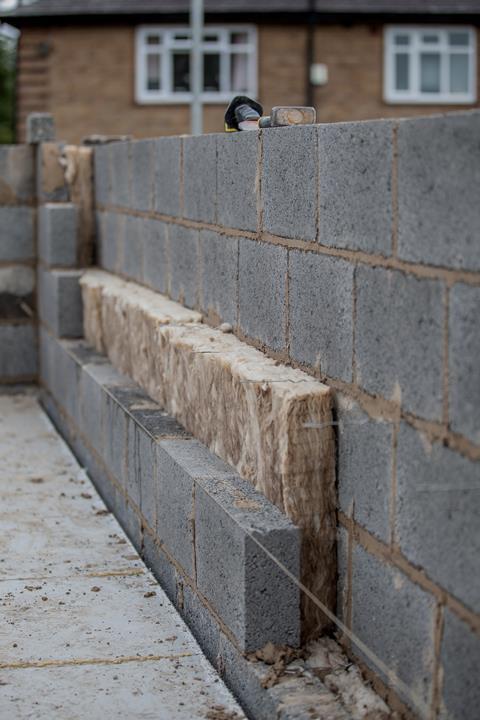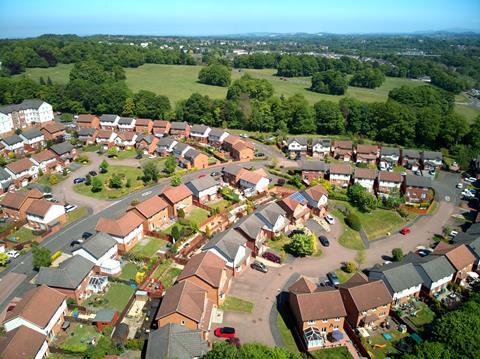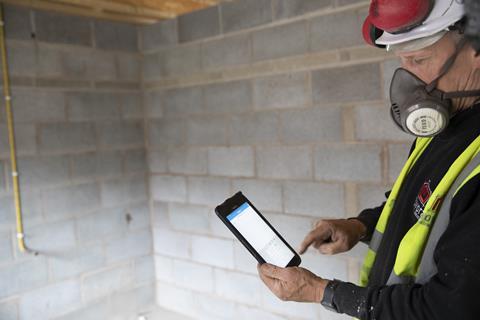Matthew Prowse, specification and housing director, for Knauf Insulation, looks at a central challenge to building energy efficient homes and what housebuilders can do to overcome it
Today’s housebuilders face increasing pressure to deliver new homes quickly, cost-effectively, and to higher standards than ever before. Building Regulations are tightening across the board and with targets like ‘net zero’ looming, energy efficiency has gained particular attention over the last couple of years.

In June we reached the end of the grace period for transitioning to the updated Approved Document L (Conservation of fuel and power). New homes in England must now meet tighter limiting U-values and deliver a 31% reduction in operational carbon, compared with the previous guidance.[1]
And as we begin 2024 the Future Homes Standard, and a further tightening of carbon reduction requirements, are just around the corner.[2]
Energy requirements are increasingly demanding but there’s a fundamental challenge for housebuilders to overcome before we can meet them.
It’s widely recognised that there’s a ‘gap’ between how homes are designed to perform and how they actually perform once built. Until that ‘performance gap’ is closed, new homes will meet energy requirements on paper, but not in reality.
So, what steps can developers take to shift from notional to real world performance?
Prioritise buildability

Insulation is crucial to achieving thermal performance and two key factors which affect that performance are the quality of the product and its installation.
In theory, insulation products which have a low lambda value (thermal conductivity) and achieve low U-values (thermal transmittance) will improve the energy efficiency of a building envelope. But again, these values are notional.
Translating them into real world performance, relies on getting the installation right as well. Some products are easier to install correctly than others and this can have a significant impact on performance.
For example, rigid board insulation won’t sit flush against a cavity wall unless it is perfectly uniform and flat. This can lead to air gaps and wasted heat. Rigid boards also need to be cut to size and taped with precision, introducing the opportunity for human error and further heat loss.
Mineral wool insulation, on the other hand, is flexible by its nature. This allows it to adapt to the cavity, both during installation and any subsequent settling of the build. Where two slabs meet, the strands also ‘knit’ together, minimising air gaps and maximising thermal performance.
Products like Knauf Insulation’s DriTherm® Cavity Slabs are easier to install correctly, making them more likely to deliver their designed performance in the real world.
Consider cavity widths
Alongside the insulation specification, it’s also a good idea to think about the width of the cavities themselves. It’s still possible to meet Part L requirements using 100mm wall cavities, however when the Future Homes Standard arrives in 2025, most homes will likely be built with 150mm cavities, to meet the increased standards of thermal performance.
Housebuilders have the opportunity to make that switch now, futureproofing their developments and allowing them greater flexibility in their choice of insulation.

Moving to 150mm cavities also allows for greater design continuity across different UK sites. Updates to National Housebuilding Council guidance now allow 150mm of full fill insulation to be used in masonry applications across all exposure zones in England and Wales, including severe and very severe.[3]
This allows developers to achieve thermal performance across all exposure zones, without having to adapt their specification for different locations.
Measure results
Improving the fabric of a home will improve its energy efficiency, but we can only know how much, if we measure it. Data is becoming an increasingly important part of the housebuilding process, as reflected by the introduction of the Building Regulations England Part L (BREL) report.
Housebuilders are now required to submit two BREL reports p/home – at the design stage, showing the specification has the potential to meet its target rates, and once built, showing the target rates have been met. The report also calls for photographic evidence demonstrating thermal continuity and quality of insulation.

This comparison of ‘designed’ vs. ‘as-built’ indicates a shift towards more accountability for real-world performance. With this in mind, Knauf Insulation has developed a tool to help housebuilders track installations of our glass blowing mineral wool, Supafil®.
Our app-based site reporting system KinetiK® allows Approved Supafil® Installers to record each bag of Supafil® as it’s used on-site, giving housebuilders additional confidence that the product has been installed as specified.
The BREL report and tools like KinetiK® gather data on the as-built home but to truly complete the picture we also need in-use data.
The government has taken a step in the right direction by launching their Energy Performance Certificate (EPC) Action Plan, to move EPCs “from a reflection of the features of a building to a true measure of ‘in-use’ building performance”.[4]

Importantly, they’ve also funded projects to develop tools that measure the thermal performance of occupied homes.
A good example is the sensor technology developed by Knauf Energy Solutions, which measures energy efficiency in the same way as energy generation, allowing fabric performance to be benchmarked for future designs.
When data like this becomes more widely available, housebuilders will have the potential to benchmark their homes’ fabric performance, to inform future builds.
The pace of change in our industry is increasing and for housebuilders to keep up, new homes must deliver real-world thermal performance. This means specifying the right insulation for the job, installing it correctly, then measuring the results. When we shift our focus from notional compliance to real-world results, the energy savings will follow.
For more information on Part L and the wider housebuilding sector, visit Knauf Insulation’s Housebuilders Hub.

References
[1] Approved Document L: https://www.gov.uk/government/publications/conservation-of-fuel-and-power-approved-document-l
[2] Future Homes Standard: https://www.gov.uk/government/consultations/the-future-homes-and-buildings-standards-2023-consultation
[4] EPC Action Plan: https://assets.publishing.service.gov.uk/government/uploads/system/uploads/attachment_data/file/922660/EPC_Action_Plan.pdf










